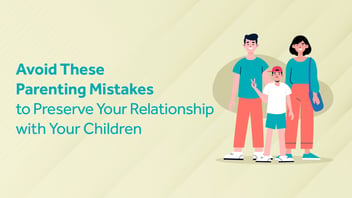Choosing the Right Digital Learning Products for Your Child's Age: A Parent's Guide
In today's digital age, the educational landscape has transformed significantly, offering parents a plethora of digital learning products for their children. However, with so many options available, it can be overwhelming to determine which ones are suitable for your child's age and developmental stage. In this guide, we'll explore how to choose the right digital learning products tailored to your child's needs, ensuring an engaging and effective learning experience.
Understanding Your Child's Age and Developmental Stage:
When selecting digital learning products for your child, it's essential to consider their age and developmental stage. Children between the ages of 4 to 12 undergo significant cognitive, emotional, and social development, which should be taken into account when choosing educational materials. For preschoolers (ages 4-6), focus on interactive apps and games that promote early literacy, numeracy, and basic problem-solving skills. Look for colorful and engaging interfaces with simple navigation to keep their attention and foster curiosity.
For preschoolers (ages 4-6), focus on interactive apps and games that promote early literacy, numeracy, and basic problem-solving skills. Look for colorful and engaging interfaces with simple navigation to keep their attention and foster curiosity.
For primary schoolers (ages 7-12), opt for more advanced digital learning tools that align with their curriculum and academic goals. Consider interactive textbooks, educational games, and multimedia resources that cater to their expanding knowledge base and critical thinking abilities. Discover a wide range of educational resources available at Kalodu.
Assessing Educational Content and Quality:
 Not all digital learning products are created equal, so it's crucial to evaluate the educational content and quality before making a purchase. Look for products that are aligned with recognized educational standards and endorsed by educators or educational institutions.
Not all digital learning products are created equal, so it's crucial to evaluate the educational content and quality before making a purchase. Look for products that are aligned with recognized educational standards and endorsed by educators or educational institutions.
Check for age-appropriate content that challenges and stimulates your child's intellect without overwhelming them. Avoid products with excessive advertising or distracting elements that detract from the learning experience.
Additionally, read reviews and testimonials from other parents to gauge the effectiveness and suitability of the digital learning product for your child's age group. Look for endorsements from reputable sources within the educational community to ensure credibility and reliability.
Considering Interactive Features and Engagement:
One of the key benefits of digital learning products is their interactive nature, which can enhance engagement and retention for young learners. When choosing a digital learning product for your child, consider the interactive features it offers, such as quizzes, puzzles, simulations, and multimedia content.
Interactive features not only make learning more enjoyable but also allow children to actively participate and explore concepts at their own pace. Look for products that offer opportunities for hands-on learning and experimentation, fostering a deeper understanding of the subject matter.
Furthermore, consider how the digital learning product encourages progress tracking and feedback, allowing you to monitor your child's learning journey and identify areas for improvement.
Conclusion:
Choosing the right digital learning products for your child's age is essential for creating a stimulating and effective learning environment. By understanding your child's developmental stage, assessing educational content and quality, and considering interactive features and engagement, you can select digital learning products that cater to their individual needs and foster a lifelong love of learning. With careful consideration and research, you can empower your child to thrive academically and beyond.



